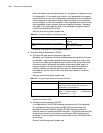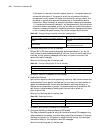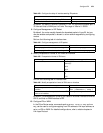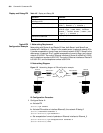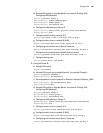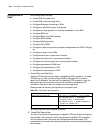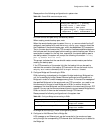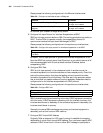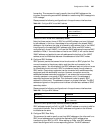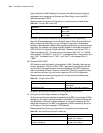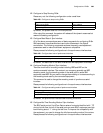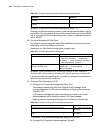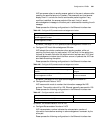
384 CHAPTER 25: CONFIGURING DLSW
Configuration of
DLSw
DLSw configuration includes:
■ Create DLSw local peer entity
■ Create DLSw remote end peer entity
■ Configure Bridge set connecting to DLSw
■ Configure to add Ethernet port to Bridge set
■ Configure link layer protocol for interface encapsulation to be SDLC
■ Configure SDLC role
■ Configure SDLC virtual MAC address
■ Configure SDLC address
■ Configure SDLC peer entity
■ Configure XID of SDLC
■ Configure to add the synchronous interface encapsulated with SDLC to Bridge
set
■ Configure to stop running DLSw
■ Configure baud rate of synchronous interface
■ Configure encoding view of synchronous interface
■ Configure idle time encoding view of synchronous interface
■ Configure parameters of DLSw timer
■ Configure other parameters of LLC2
■ Configure other parameters of SDLC
1 Create DLSw Local Peer Entity
Creating TCP channel is the first step for establishing DLSw connection. To create
TCP channel, you have to firstly configure DLSw local peer entity in order to
specify the IP address of the local end for establishing TCP connection, then the
request sent by the remote end router can be received for establishing TCP
connection. One router can only configure one local peer entity.
Please process the following configurations in the system view.
Table 428 Create DLSw local peer entity
No DLSw local peer entity is created by default.
2 Create DLSw Remote Peer
You need to configure the remote peer to establish TCP channel after configuring
the local peer. The router will continuously attempt to establish TCP connection
with the remote router. One router can configure several remote peers. TCP
channels can be connected with several remote end routers by configuring several
remote peers.
Operation Command
Create DLSw local peer entity dlsw local ip-address [ init-window
init-window-size ] [ max-frame
max-frame-size ] [ max-window
max-window-size ] [ permit-dynamic ]
[ vendor-id vendor-id ]
Delete DLSw local peer entity undo dlsw local



